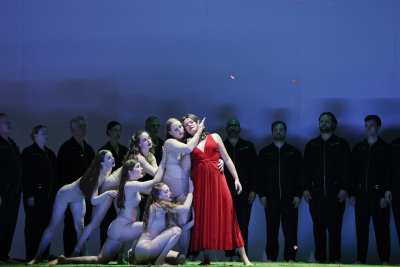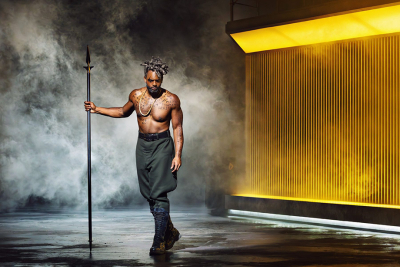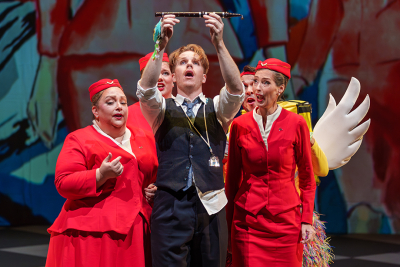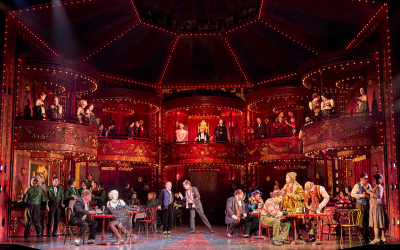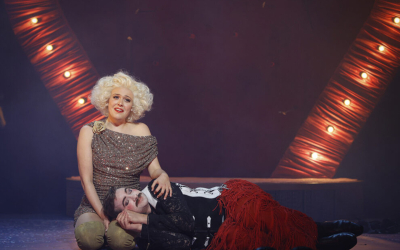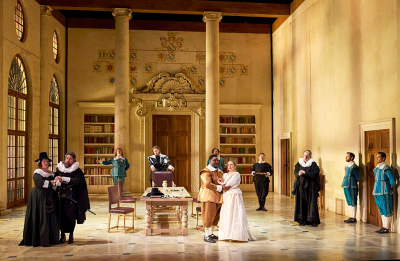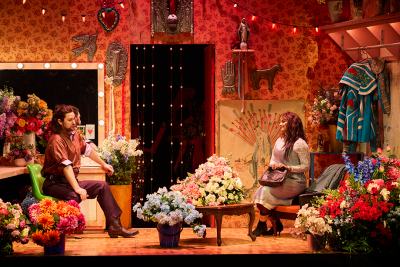Opera
German baroque composer Christoph Gluck’s Orpheus & Eurydice presents several challenges for the contemporary opera director. There are only three characters, for a start. When the story opens, Orpheus/Orfeo (Iestyn Davies) has already lost his bride, Eurydice (Samantha Clarke), to a snake bite on their wedding day. She has been taken to the Underworld, to a paradise within hell.
... (read more)It says something about the general mood in the United States at present that there is a sense of foreboding even in a town as ostentatiously laid back as Santa Fe. The locals are as friendly and eager to chat as ever, but inevitably the first question to emerge when I explain my accent is: ‘What do you Aussies think about our situation here?’ – an echo of the question that used to be asked of foreigners, seconds after they landed in Australia. This insecurity from a nation that used to be supremely indifferent to foreign opinion is a sign of the disquietude of the Trump era.
This is the highlight of Santa Fe’s summer season. The culmination of both the opera and chamber music festivals and the annual Indian Market weekend bring in the tourists, and the high-end restaurants were packed. ... (read more)Had Mozart not succumbed to a streptococcal infection in 1791, the year might have been remembered as his annus mirabilis. In less than a year, the composer produced a remarkable sequence of works: two concertos – one for clarinet, the other for piano – the motet Ave verum corpus in D major, and two operas. Both of the operas are firmly embedded in the modern repertoire, but it is not the opera seria La clemenza di Tito (The Clemency of Titus) that was immediately and permanently embraced by audiences, but its near-contemporary, the singspiel Die Zauberflöte (The Magic Flute).
... (read more)‘First come, first served’ is just one of many clichés suggesting an event occurring first will probably trump similar events that have the misfortune to be ‘pipped at the post’! Such was the bitter experience of the Italian opera composer, Ruggero Leoncavallo (1857-1919) of I Pagliacci fame.
... (read more)Immensely popular in Mozart’s lifetime, the three-act singspiel Die Entführung aus dem Serail (Abduction from the Seraglio) presents a distinct problem for contemporary interpreters. Its Orientalist plot concerning the kidnapping of a European noblewoman and her maid by a Turkish pasha paints a portrait of the East, as the musicologist Daniel Sheridan has written, ‘as a sonic and scenic spectacle for Western spectatorship’.
... (read more)Sydney has had its coldest July in decades, and the rain it raineth every day, but this did not deter operagoers from savouring two further offerings in the winter season: a fine revival of what must rate as one of Opera Australia’s best Mozart offerings, and a new production of Antonín Dvořák’s melodious fairy tale.
... (read more)A week ago, on the stage of the Joan Sutherland Theatre, a desperate tenor killed his soprano lover in a blind, frustrated fury. This week the tenor hero is killed – if that is the right way to characterise it – by the soprano who loves him, but a different complex of emotions accompanies this operatic death as he dies blessing her.
... (read more)It is noteworthy that two of the operas in Opera Australia’s current season, Bizet’s Carmen and Puccini’s La Bohème, are among the five most performed operas, perhaps only rivaled by Verdi’s La Traviata. The website Operabase, viewed by many as the most authoritative opera performance information site, lists these three with Mozart’s The Magic Flute and Puccini’s Tosca as the top five. Director Peter Brook, when asked in 1983 about his choice to stage a new Carmen rather than any other opera, observed: ‘Out of the ten most popular operas, there is one that is the most popular – Carmen. And it’s not only an opera; it’s a phenomenon.’
... (read more)Operas come in all shapes, sizes, and venues. Having just returned from a visit to New York’s Metropolitan Opera House to see the final performance of an outstanding production of American John Adams’s new opera, an adaptation of Shakespeare’s Anthony and Cleopatra, it was quite an adjustment to see fellow American Nico Muhly’s latest opera, Aphrodite, commissioned and staged by Sydney Chamber Opera at their usual venue, Sydney’s Carriageworks. Adams’s opera calls for many soloists, supplemented by a large chorus and orchestra; Muhly’s work involves two singers and seven instrumentalists. The Metropolitan is the largest opera house in the world; Carriageworks is rather more intimate.
... (read more)

